5 Best Harvest Alternatives in 2025
The long-considered trendy choice in time-tracking no longer suits your needs? Worry not! There are other better alternatives.
I tested Harvest for one month, and it left me lamenting functionalities that I wished were better.
Before diving in, here are some of the drawbacks I discovered during the trial, which made me look for Harvest alternatives:
- There is no leave tracking feature, which makes it hard for me to plan the team’s workload around their PTO or take on new writing projects. In Harvest, I was able to create a workaround to see when my team of writers was off.
- Harvest was manually intensive, and every time my team and I had to track time, we had to add the time entries manually. There was no option to automatically track tasks, which defeats the purpose of a time-tracking app.
- It was hard to customize my reports for clients, as these are quite templated and in a basic version. I had to export the data to other tools to access more advanced analytics.
- It is quite expensive for what it offers when compared to other tools of its kind. There are tools with similar prices but more advanced features, such as Timeular.
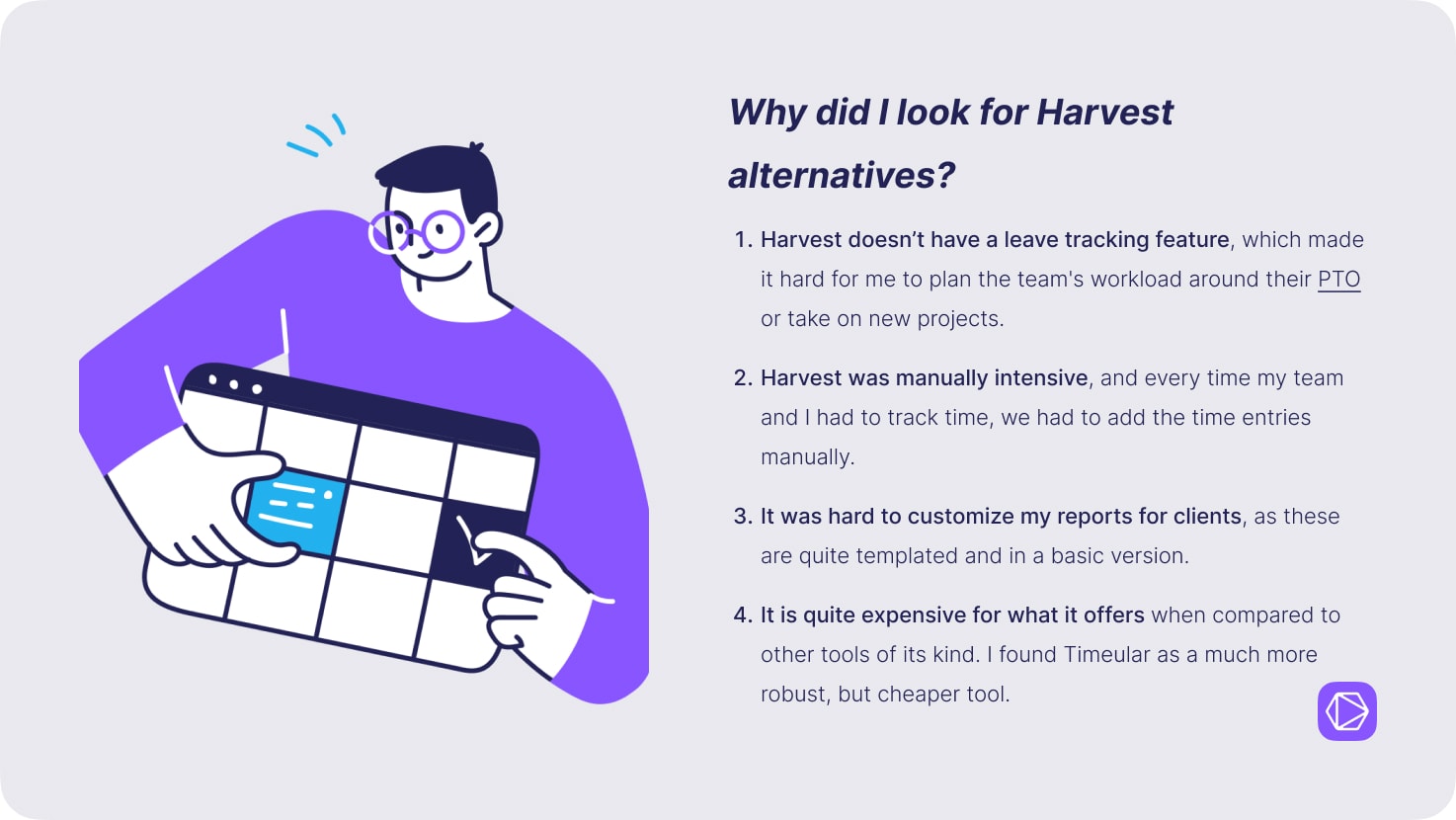
The five Harvest alternatives
| Tool | Best For | Standout feature | Key advantage vs. Harvest | Main limitation |
|---|---|---|---|---|
| Timeular | Teams that need modern time tracking with productivity insights | AI-powered productivity dashboard + physical tracker | Automatic time tracking + PTO management | No limitation |
| Toggl Track | Users looking for simple, efficient tracking | One-click cross-platform tracking | Simpler interface, better usability | Limited project management features |
| Clockify | Budget-conscious teams | Comprehensive free plan | More detailed reporting at a lower cost | Privacy concerns with monitoring features |
| RescueTime | Productivity-focused individuals | Automatic productivity scoring | Deep work pattern insights | Limited project/client billing features |
| Hubstaff | Teams needing detailed oversight | Comprehensive monitoring | Advanced employee tracking | Can impact team trust and morale |
1. Timeular
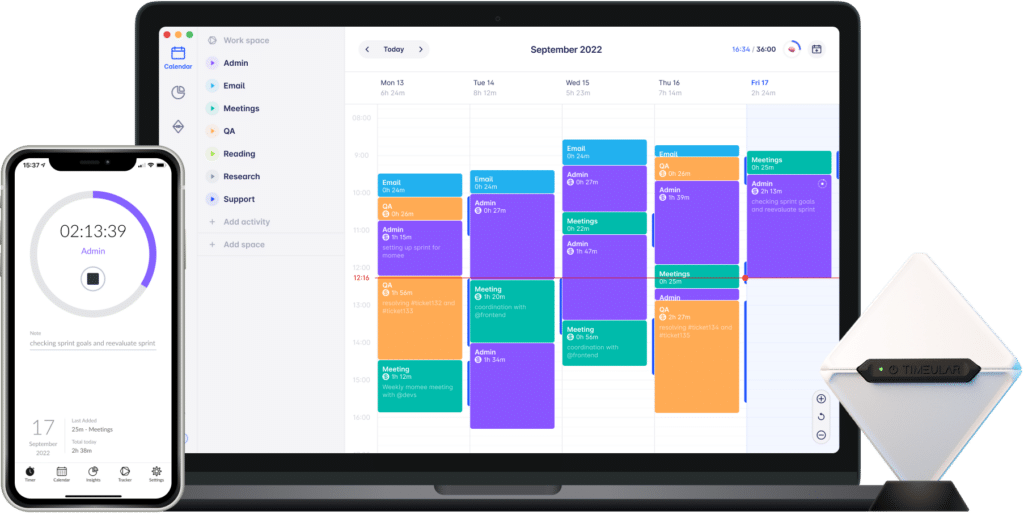
Timeular tops this list as a Harvest alternative, as it’s the only time tracker that I found both simple to use and packed with useful features for productivity monitoring, and not only.
I’ll cut to the chase, and I’ll add here the features that make Timeular surpass Harvest:
- Using Timeular felt like using a modern time tracking tool updated to my needs as an entrepreneur, versus Harvest, which felt like using an outdated accountability tool.
- Timeular includes automatic time-tracking and even made me forget I was tracking my work, as it did everything for me in the background, whereas Harvest made me track hours manually. With Timeular, all the apps, websites, and docs I was working on were captured in my timesheet. All I had to do was click once and accept the time entry suggestions.
- Timeular’s time-tracking methods, even the manual ones seemed more intuitive to me compared to Harvest’s mainly manual approach.
- It made it easy for me to generate reports for my clients that were both customizable and detailed. Timeular’s time reporting system was robust during my test and did not meet my needs at all.
- I was able to track PTO and monitor overtime for my team, so I could project an informed capacity planning around my team’s health and time off.
- Timeular has a physical 8-sided tracking device that some members of my team loved, as it makes time tracking fun and tangible.
All in all, Timeular is an obvious choice for me as it has more features, it’s more intuitive, fun, and simple to use, and at a smaller price than Harvest. Timeular’s pricing starts at $6.5 per user/month for individuals, while Harvest’s is $11 per user/month.

“We have become 20% more profitable because everyone is in the habit of time tracking.” – Richard Wingfield, Head Geek at Envision Design
Other facts about Timeular:
- It includes AI features, such as automated suggestions that fill your timesheet based on your calendar events.
- It uses AI to create a personal productivity dashboard, where you can see apps that are not productive in your workflow or when you’re at peak productivity during the day, so you can enhance your work habits.
- It helps you stay on top of budgets with automated notifications when you reach a certain budget limit. You just need to add the hourly budget on a client or project, and as you work, Timeular records how many hours you’ve left.
- Team collaboration is seamless, with shared folders, your team can track time in one place. So, if two team members work on the same project, the data at the end of the day will show the sum of the worked hours without sharing timesheets.
- It includes +3000 app integrations: integrate with tools of choice like Trello, Asana, and Google Calendar with Timeular for easy synchronization of tasks and projects. And, if you use Zapier, you can create automation on your own. (ex: Xero time tracking integration).
Build a habit using muscle memory and a powerful physical reminder. All new users get 2 months free subscription when connecting a new Tracker.
So, why is Timeular the best time Harvest alternative?
While both Harvest and Timeular are effective time-tracking solutions, Timeularstands out as it includes automatic time tracking, more robust reporting features, a cool physical tracker, and allows its users to track time off as well as overtime. Moreover, Timeular’s price is smaller than Haverst’s even though Timeualr comes with more added value.
These features, combined with its appealing pricing options, make Timeular the perfect Harvest alternative for businesses, teams, and individuals looking for an accurate, unique, and engaging time-tracking experience that increases productivity.
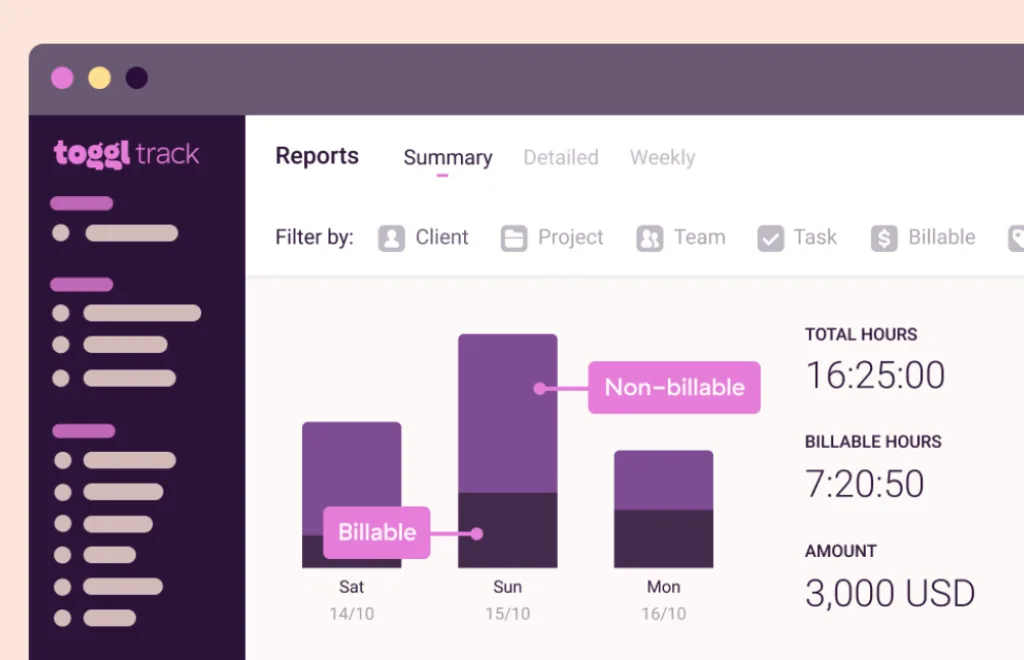
2. Toggl Track
One of the most popular time-tracking tools on the market, Toggl Track, was robust in my testing, that’s why I placed it in second place.
Note that I’m talking about Toggl Track, which has only time-tracking features, while Toggl’s suite has other tools and broader functionalities including resource management or project management software.
Here are some of my findings from this Harvest time tracking alternative:
- When I used Toggl Track, it was easier for me to focus on time-tracking essentials due to its simpler interface, whereas Harvest seemed cluttered with some features I rarely used.
- The one-click timer in Toggl Track made time tracking feel simple, and I could easily switch between tasks without losing momentum.
- Switching between mobile and desktop was flawless in Toggl and allowed me to start tracking on my desktop and simply continue on mobile without any hiccups.
- Toggl’s reporting system, though basic in the free plan, gave me clearer insights into my time usage compared to Harvest’s complicated reporting structure. It helped me visualize team productivity as well, and it simply made it easy for me to gain insights to adjust team management and workload, too.
- Its browser extension integrated seamlessly with my other tools, like Notion and Slack.
Other facts about Toggl Track:
- The idle detection feature automatically notifies you when you’re away, so you can stop tracking time.
- Its background tracking capability helps you capture time spent in different applications without manual input.
- The interface is clean and minimalist, making it easy for new users to get started quickly.
So, why is Toggl Track a good Harvest alternative?
While Harvest is a powerful time-tracking tool, Toggl stands out with its simplicity, versatility, and reporting features.
Though it lacks some of Harvest’s project management features, its straightforward approach and lower pricing make it an attractive alternative for freelancers and teams who prioritize simple, efficient time tracking over complex project management tools.
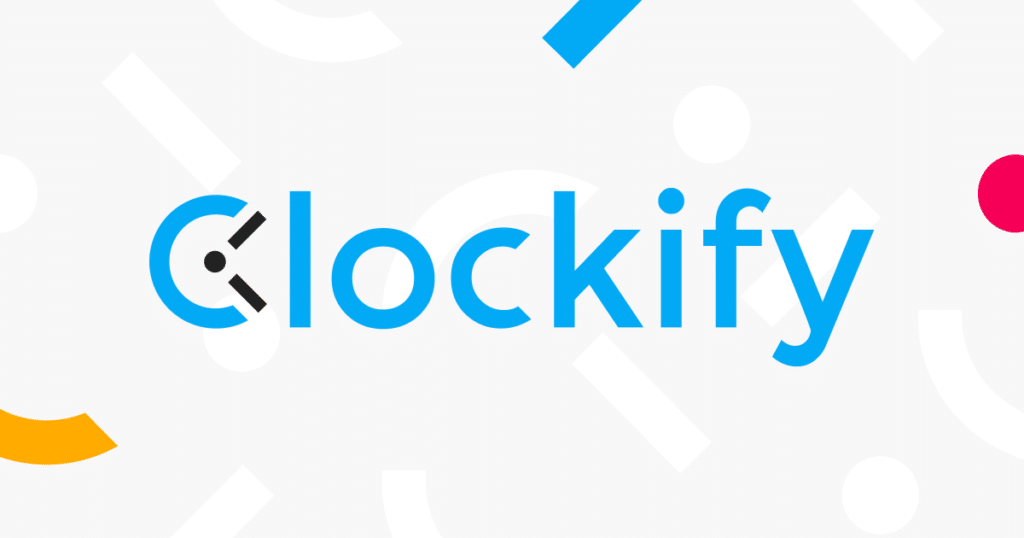
3. Clockify
Clockify is a commonly used time-tracking software that provides time tracking, timesheet management, project tracking, and reporting. Due to its key features, Clockify is a reliable alternative to Desktime and other time trackers.
Here are my key findings from testing this Harvest alternative:
- The project monitoring in Clockify was more comprehensive than Harvest’s and helped me track multiple content writing deadlines and budgets in one place.
- Its expense tracking feature made it easier for me to manage client-related costs, as I could attach receipts directly to time the entries, something I struggled with in Harvest.
- The free plan was surprisingly robust and offered me more features than Harvest’s paid basic tier, including unlimited projects and users.
- The reporting system was more flexible than Harvest’s, though I found it took longer to master it because of its countless customization options.
- The time-tracking interface, while comprehensive, felt less intuitive than Harvest’s, and I needed more clicks to accomplish basic tasks.

Kaitlin Snow Seamons, Executive Creative Director at Harmon Brothers
Other facts about Clockify:
- The built-in scheduling feature helps manage team availability and workload distribution. Note that this feature is never with unlimited users, which makes task management harder.
- Its timesheet approval system streamlines the review process for managers or group admins.
- The kiosk feature enables easy clock-in from shared devices, which is useful for office settings.
- You can use multiple time entry methods, though mostly manual, compared to modern Harvest alternatives like Timeular.
So, why is Clockify a viable Harvest alternative?
While Harvest focuses on combining project management with time tracking, Clockify offers a more budget-friendly option with comprehensive time tracking features. However, it’s important to note that some users might find the privacy concerns around its employee monitoring features problematic, and the mobile app can be unreliable.
The main advantage over Harvest is the generous free plan and more detailed reporting capabilities, making it a good choice for teams on a budget who need detailed time tracking without advanced project management features.
💡 Pro tip: Clockify has its drawbacks, too, so if you used it and you’re not happy, you might want to look for Clockify alternatives.
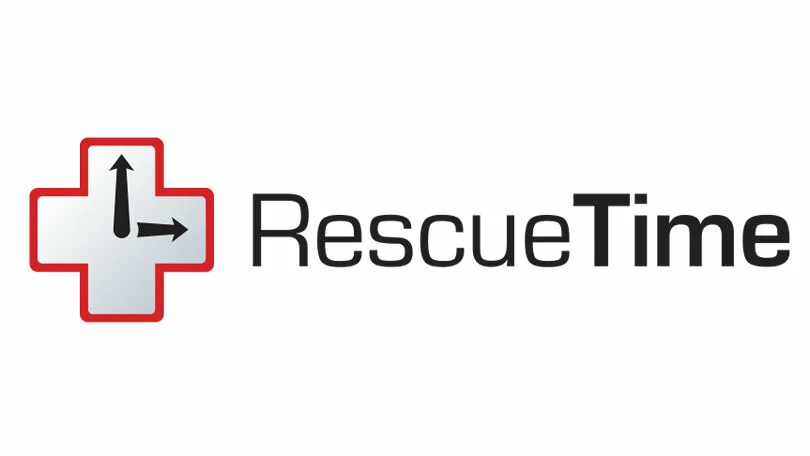
4. RescueTime
Another tool worthy to be mentioned on the Harvest alternatives list is RescueTime. It is a time-tracking software that focuses on helping users improve their productivity and eliminate distractions.
Here are my key findings from testing this Harvest alternative:
- The automatic tracking feature run in the background and automatically tracked my time spent on different applications, websites, and tasks. It offered me an accurate report of time spent on tasks.
- The productivity scoring feature gave me insights I never got from Harvest. With it, you track time spent on tasks, and then RescueTime automatically categorizes your activities as productive or distracting based on customizable rules.
- The detailed focus reports helped me understand my peak productivity hours and focus patterns something completely missing from Harvest’s feature set.
- Focus time and goal setting proved useful as they allowed me to set goals for productive time and block distracting websites during designated focus sessions.
Other facts about RescueTime:
- Offline time logging which lets you categorize your time spent away from your computer.
- The smart categorization system learns from your work patterns over time.
- Privacy controls allow you to pause tracking or mark certain applications as private.
So, why is RescueTime a different kind of Harvest alternative?
Both tools are great at basic time tracking, RescueTime takes a completely different approach by focusing on automatic productivity monitoring. It’s ideal for individuals and teams more interested in understanding and improving their work patterns than tracking billable hours.
The main advantage over Harvest is its hands-off approach to time tracking and deep productivity insights, though it may not be suitable for those needing project-specific time tracking or client billing features.
💡 Pro tip: RescueTime is not good enough? Check out our article on RescueTime alternatives and competitors.
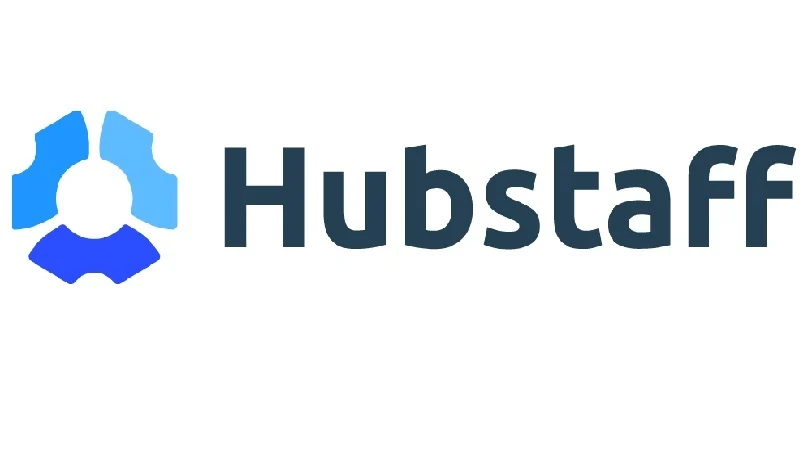
5. Hubstaff
Hubstaff is an employee-monitoring software designed for remote teams. It offers a variety of features, pricing options, and advantages over Harvest, making it one of the competitive Harvest alternatives.
Here are my key findings from testing this Harvest alternative:
- The payroll integration helped me streamline payment processing based on tracked time, something Harvest handles less comprehensively.
- The project budgeting tools were more detailed than Harvest’s, with automatic alerts for budget overruns.
- The GPS tracking feature offered me location-based time tracking that Harvest lacks, though this raised some privacy concerns among my remote team members, and I am personally not the biggest fan of geolocations.
- The automated screenshots provided proof of work but made my team uncomfortable, which is quite different from Harvest’s trust-based approach.
- The productivity monitoring was more extensive than Harvest’s, tracking app usage and activity levels, though some team members found it overly intrusive.
Other facts about Hubstaff:
- Scheduling and attendance tracking simplifies time-off management.
- Client invoicing is automated in Hubstass based on tracked hours and rates.
- The mobile app enables field team tracking with geofencing.
So, why is Hubstaff a specific type of Harvest alternative?
While Harvest focuses on straightforward time tracking so you can manage projects, Hubstaff provides a more surveillance-oriented approach with extensive monitoring features. It’s better suited for organizations prioritizing detailed employee oversight over simple time tracking.
The main advantage over Harvest is its comprehensive employee monitoring capabilities, though this comes at the cost of potential privacy concerns and team trust issues. It’s worth considering whether such intensive oversight aligns with your company culture before making the switch.
💡 Pro tip: If this app isn’t the best for your needs, read our post and find 10 alternatives to Hubstaff.
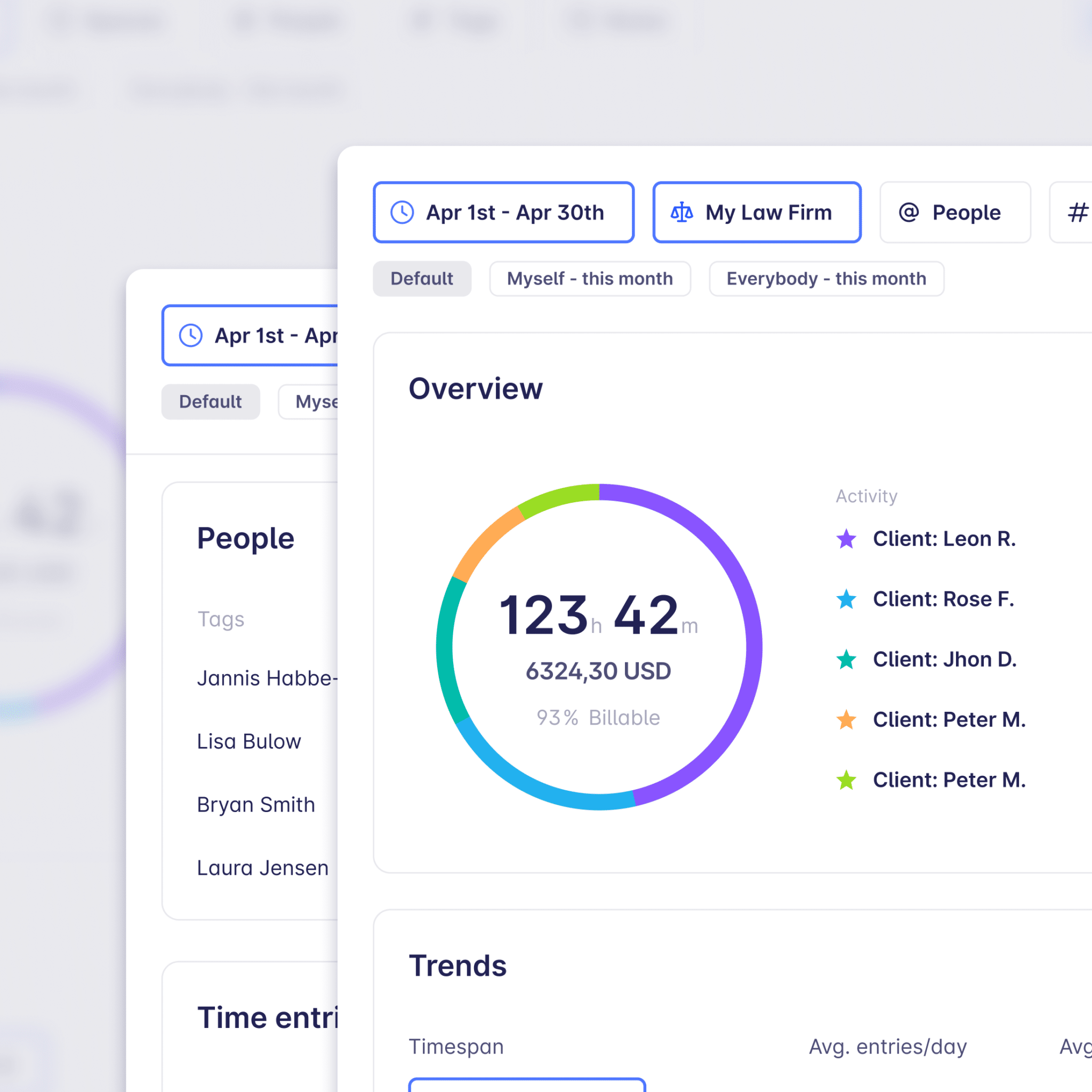
Increase profitability an bill accurately with the effortless time tracking app. Never chase a timesheet again!
How should I choose the right Harvest alternative?
Selecting the right time-tracking tool is pivotal for your team’s productivity and workflow. Here are the key factors to consider:
- First, identify your primary needs: Are you looking for simple time tracking, or do you need comprehensive project management features? Do you need project planning and extensive features to stay on top of project progress? Map your needs.
- Consider your team’s size and comfort level with technology. Some tools, like Timeular, offer intuitive interfaces with both physical and digital tracking options, while others, like Toggl Track, are purely digital. Which one would suit them best? Do you need a plan that supports up to five users or more?
- Privacy is another pivotal factor: While tools like Hubstaff and Clockify have extensive monitoring capabilities, they might impact team morale. The best time-tracking tools often don’t intrude on users’ privacy; that’s why it’s best to consider one like Timeular.
- Budget also matters: Many alternatives offer more features than Harvest at a lower price point, so consider wisely which tool adds enough value to you and your organization for the price you pay.
Conclusion
While Harvest has been very popular, it also has limitations. There are several alternatives available that offer unique features and advantages. Time tracking tools like Timeular, Toggl, Clockify, RescueTime, and Hubstaff include various functionalities for different needs, from simple time tracking to employee monitoring and project management integration.
Timeular is the best Harvest alternative for businesses, teams, and small companies who need to bill their time. It’s also the best due to its simplicity, comprehensive, detailed, and sharable reporting capacities, flexibility in pricing, and seamless integrations. This makes Timeular perfect for those who want to optimize their time management, enhance productivity, and increase billable hours.